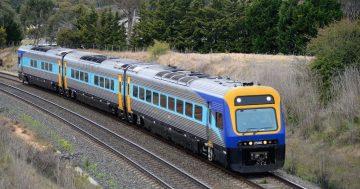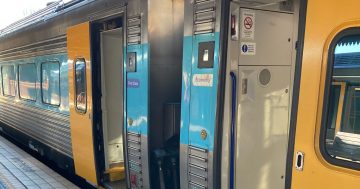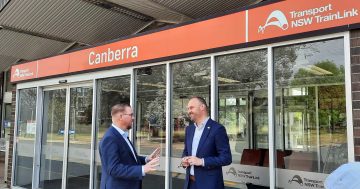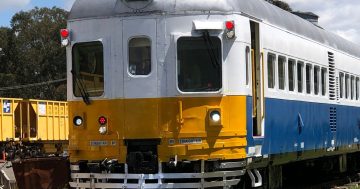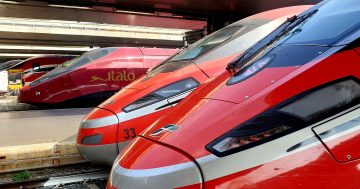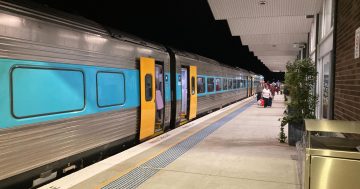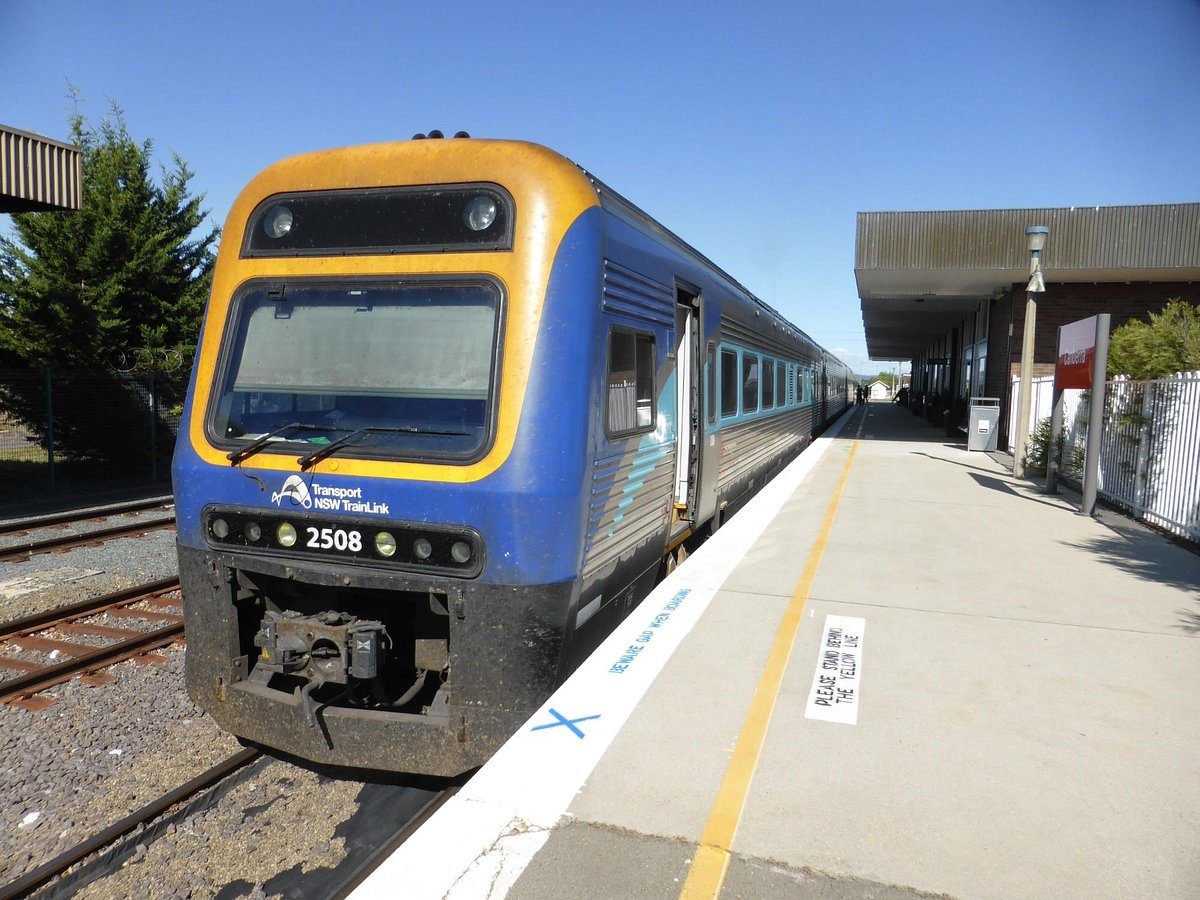
The Canberra-Sydney train at the Canberra Railway Station at Kingston: outdated and inadequate. Photo: NSW Trainlink.
A faster rail link with Sydney combined with enhanced public transport connections in Canberra would boost the national capital’s tourism potential and increase the number of visitors to the city, a federal parliamentary inquiry has been told.
The Canberra-Sydney Rail Action Group (C-SRAG) argues in its submission to the National Capital inquiry for a faster, more frequent, high-quality rail service between Sydney and Canberra. It also calls for either light rail or connecting bus services between the railway station at Kingston and the national institutions in the Parliamentary Triangle.
C-SRAG also suggests the construction of a new station closer to Civic.
The submission states it is well recognised the current line to Sydney is outdated and inadequate, and faster rail has been on NSW’s priority transport list since 2020.
But still train travellers face a four-hour-plus journey, something that has not changed in 60 years.
It’s a pitch to the right audience because funding from the fast rail-friendly Albanese Government will be needed to at least fix the track if and when the new Labor NSW Government decides to act, not to mention the ACT side of the border.
C-SRAG says a competitive rail service at a time of high fuel prices and air fares will make the national capital a more attractive and feasible destination, and open up other visitor opportunities.
For example, the proximity of the current railway station to Manuka Oval provides an opportunity for additional regular public transport services – like the annual ‘Elvis Express’ train to Parkes operated by Transport for NSW or chartered rail services such as the heritage ‘Picnic Train’ operator – to bring spectators to cultural or sporting events in Canberra.
“Similarly, the combination of improved local public transport services connecting with upgraded intercity rail services would make day trips or short overnight ‘mini-breaks’ to see Canberra’s cultural sites such as the National Gallery, Portrait Gallery, the Museum of Australian Democracy at Old Parliament House and the Australian War Memorial possible without needing a car,” the submission states.
C-SRAG cites Professor Andrew McNaughton, current chairman of the UK’s High Speed Rail construction agency and author of the most recent Report into Faster Regional Rail Services for NSW, who argues the job is a straightforward infrastructure management task that can bring travel times down by at least 75 minutes.
It proposes two options – rebuilding the existing line to standards that bring journey times down to about 3.5 hours, or progressive reconstruction of the corridor to enable higher speeds for a 2-3 hour trip and increasing services closer to that offered by buses.
This would start to approach end-to-end journey times capable of competing with air travel.
The first option would require some straightening out of the track and new rolling stock.
The second and preferred option would also require new rolling stock to make best use of the upgraded infrastructure and potentially a new railway station closer to Civic.
This would cost more, requiring major realignment and/or deviations of the existing corridor, particularly between Campbelltown and Goulburn.
But C-SRAG says these major works will benefit every passenger and freight train along the Sydney-Melbourne interstate rail corridor.
“Getting a faster, more frequent service running to a 2-3 hour transit time to Sydney is essential to drive improved patronage,” the submission states.
“An ACT Government survey from 2018 indicated 57 per cent of respondents would be more likely to travel via train between Canberra and Sydney if the travel time was between 2-3 hours.”
C-SRAG believes the travellers are there, with recent patronage trends pointing to a strong post-pandemic recovery.
It says more than 210,000 passengers took the train in 2022, and seating limits on the existing three daily return trains will be tested within the next year or two.














